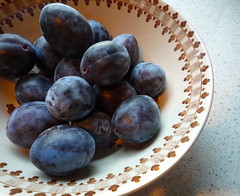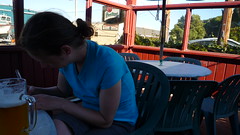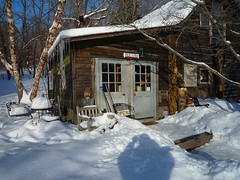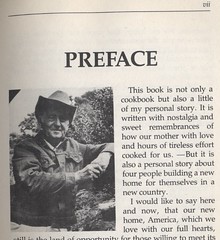The Czech-Slovak Bazaar
Bazaar culture is a huge part of living in Montreal. Montreal is a city that is literally littered with churches (remember, this was the town about which Samuel Clemens once quipped, “This is the first time I was ever in a city where you couldn't throw a brick without breaking a church window”), and nearly every single one of them—Catholic, Protestant, and otherwise—holds a bazaar at some point in time during the course of the year, with most occurring in the fall. Most everyone has a favorite one, and we’ve got a few of our own, but one of our absolute favorites is the Czech-Slovak Bazaar (formerly the Czechoslovak Bazaar) that takes place every November at St. Ignatius Church (4455 Broadway W.) in Notre-Dame-de-Grace (NDG).
Montreal still has a rather large population of Eastern European extraction, although many of the Poles, Hungarians, Yugoslavs, and others who came here beginning in the late 19th century relocated to points west (especially Toronto and other parts of Ontario) over the decades. It’s safe to say that these days Montreal doesn’t have much of a Czech community or a Slovak community, but that doesn’t stop those that do live here from holding a bazaar once a year, and when you visit this bazaar you suddenly find yourself immersed in a loose-knit, largely elderly Czech scene (the Czech presence far outweighs any Slovak presence) you never knew existed. Show up at 10:55, minutes before the doors open, and you’ll get the false impression that this scene is bigger than it actually is, as you’ll find dozens and dozens of Czechs (primarily) milling about out front, jostling one another, swearing underneath their breaths (in Czech, of course, as they’ve all gotten used to no one ever being able to understand them when they do so in the outside world), trying to establish pole position so they can get first dibs on the pastry table. You’d think you’d need a larger community for there to be this kind of adrenaline rush, but, no, this is the Montreal Czech community in its entirety. They’re all like this, and that’s just part of the charm.
Time stands still inside the doors of St. Ignatius. For one thing, many of the attendees sport fashions that would not have been out of place on the streets of Prague circa 1982. The look can only be described as an Eastern Bloc parody of Western high style, with absolutely no ‘80s-retro-chic irony at play. For another, every year the stands look exactly the same, the vendors look exactly the same, and the attendees look exactly the same—in fact, you recognize a number of people you haven’t seen since last year’s festivities. One of our favorites is the late-40s-ish tall, blonde Adonis figure who sells the brand-name-knock-off auto care products (windshield wiper fluid, motor oil, etc.) at cut-rate prices. Another is the barrel-chested 50s-ish gentleman who helps clear the tables. This year he showed up wearing a pair of Nike Air Flight Elites™ and a knit belt that read “El Charro.”
There are always decent books and baubles to be had, even if the selection is slim, but the biggest reason to visit is the food. One corner of the room features savory Czech treats: steamed Czech sausages with mustard, potato salad, schnitzel, potato pancakes, and best of all, chlebicky. If you’ve been to the Czech Republic and missed out on chlebicky—as many people have—you’ve really missed something. Every family has their own method for making them, and they’re brought out for any kind of special occasion, but you can also find them at the many beer, sausage, and prepared meal eateries that dot a city like Prague. What exactly are chlebicky? Well, they’re just open-faced sandwiches, really, but open-faced sandwiches made with an attention to detail oftentimes lacking outside of the Czech Republic.
Our favorite chlebicky at the Czech-Slovak Bazaar is constructed as follows:
1 slice of bread (preferably a light rye)
1 thin layer of country-style pate
1 slice of ham, folded in half
1 slice of salami, shaped into a horn
1 slice of radish
1 sliver of pickled cucumber
1 sliver of red bell pepper
1 sliver of green bell pepper
1 slice of hardboiled egg
Parsley
As good as the chlebicky are, the real focus of attention at this bazaar is the mammoth sweets table. There you’ll find a vast array of kolaches, including kremrole, babovky, and oriskovy dorty, stretching across a huge, long group of tables in front of the stage, where contributors are always busily trying to put the finishing touches on more pastries so that they can replenish the supply. You choose a box (S, M, or L) and ask the staff to fill it up with whatever your heart desires (This year I was transfixed by the sight of one of the staff members wearing one of those ethnic pride t-shirts in the “Kiss me, I’m Irish” vein. The woman is a fixture at these gatherings that we recognized from years past, of course, but this year she wore one of those big, bold t-shirts with the huge lettering that provides a “humorous” definition of a particular term. The term in question was “Czech,” and the “definition” read that a Czech was someone of [Czechoslovakian tricolored flag graphic] descent, who was known for generosity, “fun,” kolaches, dumplings, and so on. So far pretty banal, but in addition, for some reason the sleeve read “Las Vegas.” It made it harder to focus on the desserts, harder to order). One of my favorites this year was a chocolate icing-covered carrot cake—it was extremely moist and had raspberry jam spread between its two layers. Delicious. We grabbed our usual assortment of Czech treats and made our way out of the madness that is the Czech-Slovak Bazaar, only to hit some more (“much more civilized”) bazaars in Westmount, before going home for tea and kolaches.
aj
Pictured: Babovka (center), Morovske kolache (front, center), tvarohove pirosky (with dark plum tops), odpalovane "puffs" (cream puffs) -- for some reason my parents can't remember what they're called (!).
m
 fig. a: fall plums
fig. a: fall plums fig. b: Czech plum
fig. b: Czech plum fig. c: Czech plum torte
fig. c: Czech plum torte



























